Europe Road Trip (Page 5 of 6)
By Tom Kagy | 22 Dec, 2025
After rounding the Alps with a stop in Geneva and the French town of Annamasse our trip descended back down toward the French heartland.
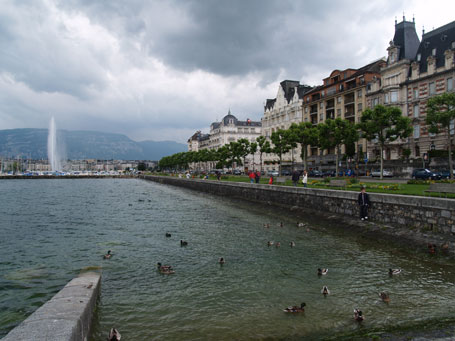
Geneva is built around the southwestern tip of Lake Geneva where the Rhône River exits the lake. The heart of Geneva is seen in the distance from a point about a mile uptown along the lake’s northern shore.
Geneva Near the River
The scenic beauty of the Swiss countryside, the Alps and Lake Geneva couldn’t make up for the missing street life which contributes to the city’s sedate image. Most of the restaurants in the city center were Indian, middle-eastern or pizza restaurants operated by recent immigrants with little feel for Italian cuisine. We did enjoy a fine late-night dinner at a busy neighborhood restaurant in the outlying French village of Archamps where our hotel was located. The village patisserie was another delightful surprise.
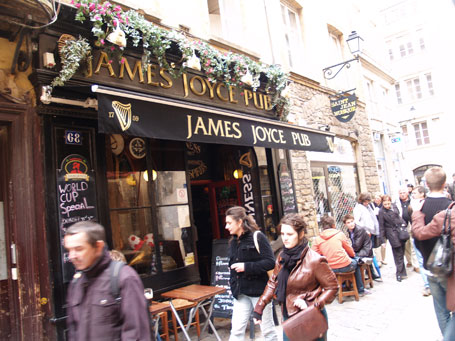
Rue St-Jean, one of the lively alleys around St Jean Cathedral, is proof that the proximity of old architecture puts tourists in mind of food and drink. It offers a satisfying array of pubs, cafés, patisseries and glaciers (ice cream shops).
Old Lyon Around Cathedrale St-Jean
The west bank of the Saône River, two miles north of where it meets the Rhône, is one of the most pleasant, atmospheric spots in all of France. Centered around the truly ancient Cathedrale St-Jean are delightful alleys lined with eateries and shops. Take an invigorating 20-minute walk up a verdant series of walks to the magnificent Notre Dame Basilica from which you can enjoy a climax view of Old Lyon.
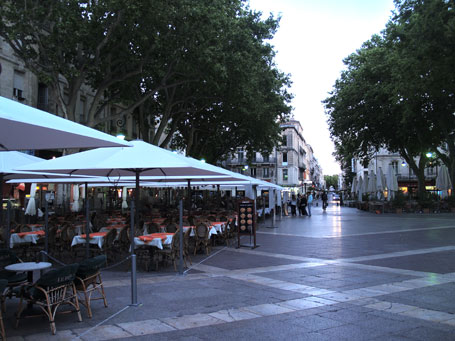
Place de l’Horloge is the central square in Avignon — the epicenter of the Provençal tourist scene, thanks to the immense 14th-century gothic stone complex known as the Palace of the Popes a block away. The region’s most popular restaurants, cafés and bars can be found along this plaza or its vicinity.
Avignon Around the Palace of the Popes (Palais des Papes)
As you draw near Place de l’Horloge (Clock-Tower Square) you know you have arrived at the pulsing epicenter of the Provençal summer tourist scene. And by the time you walk up three short tree-lined blocks to the Pope’s Palace, even the most jaded traveler falls under the heavy spell of the massive 14th-century Roman architecture. The heart of the ancient town is even more enchanting after sunset when crowds have thinned and twilight fills the mind with echoes of history as you wander the maze of walls, towers and half-hidden courtyards.
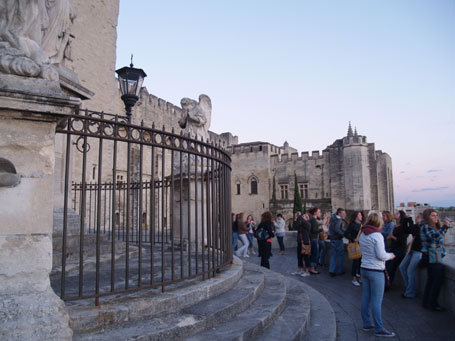
A student group enjoy the inspiring evening view from the front of the Pope’s Palace in Avignon, France. Built in the 14th century while the papal seat was moved from Rome to Avignon, the Palace is one of Europe’s largest gothic structures built in the medieval period.
Old Arles Around the Amphitheater (Arles Centre Ancien)
Perched on the east bank of a bend in the Rhône River, old Arles basks in the warmth of its considerable array of Roman ruins. They aren’t the grandest ruins you will see in Provence, but they are among the oldest. The best part is the bucolic air that allows the impression that you personally discovered the ruins, a happy fact to contemplate over surprisingly good food at the pretty outdoor tables along Boulevard Georges Clemenceau or right next to the Amphitheater itself.
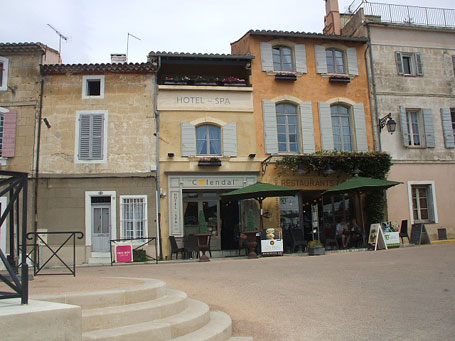
This quiet corner of Arles is on Rond-Point des Arenes, the road that circles the Roman arena, the largest structure among the town’s Roman ruins. Arles affords visitors the serene and quaint ambience of a town that is not on the itineraries of many tour companies.
Nîmes Along Boulevard des Arènes
The town’s most impressive attractions are a pair of 1st-century Roman structures linked by a 1-kilometer stretch of leafy Boulevard des Arènes — Maison Carrée to the north and the Amphitheater (Arène) to the south. The Boulevard is lined with cafés serving up ambience befitting one of Provence’s most famous tourist destinations.
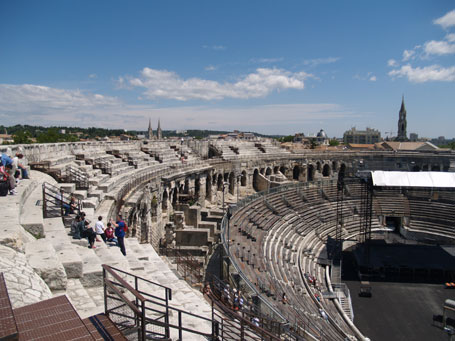
The 1st-Century Roman amphitheater in Nîmes (Les Arènes de Nîmes) could seat 20,000 spectators and is one of the largest Roman amphitheaters in existence. Since 1863 it has served as a bull ring.
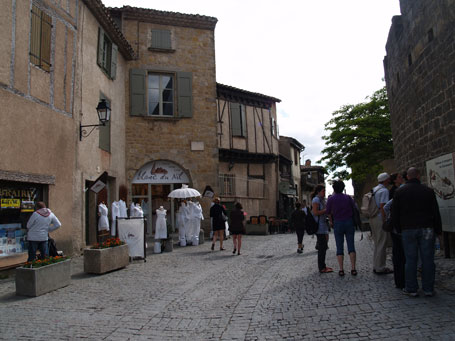
Inside Carcassonne Castle (Cité du Carcassonne) is a thriving town whose streets are lined with shops, restaurants and inns. Carcassonne is the largest medieval castle still standing today and one of France’s biggest tourist attractions, with 3 million visitors a year.
Carcassone Castle Town (La Cité de Carcassone)
These 1,300-year-old stone ramparts and chateau in France’s Languedoc region were saved from demolition and renovated in the mid 19th century by a farsighted mayor. The alleys inside the walls are now lined with shops catering to tourists, but they give a sense of what life might have been like inside a thriving medieval castle town. When you tire of crowds and shops, no matter how charming, wander out to the periphery for a strenuous hike up and down the outer walls and the surrounding hillside and village. The castle also serves as a summer concert venue for musicians like Bob Dylan.
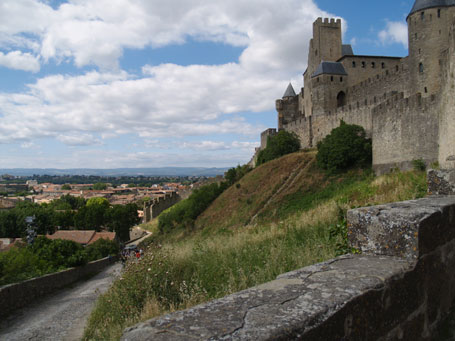
Carcassonne Castle (Cité du Carcassonne) was actually a town fortified against the ancient Spanish kingdom of Aragon. Its size and position on a rugged hillside make the perimeter an ideal hike for travelers itching to stretch their legs. Carcassonne is the largest medieval castle still standing today and one of France’s biggest tourist attractions, with 3 million visitors a year.
"And by the time you walk up three short tree-lined blocks to the Pope's Palace, even the most jaded traveler falls under the heavy spell of the massive 14th-century Roman architecture."
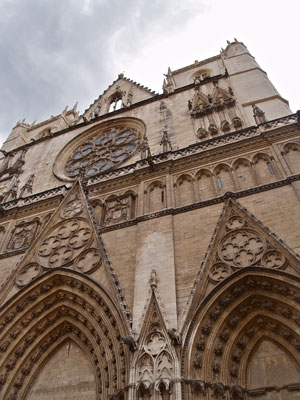
Cathedrale St-Jean is Old Lyon's architectural star, begun in the 12th and built over three centuries, it blends Roman and Gothic styles. The façade shown here is from the late Gothic period. Its drawing power has helped build a lively tourist area around it that includes quality restaurants, cafés and bakeries.
Asian American Success Stories
- The 130 Most Inspiring Asian Americans of All Time
- 12 Most Brilliant Asian Americans
- Greatest Asian American War Heroes
- Asian American Digital Pioneers
- New Asian American Imagemakers
- Asian American Innovators
- The 20 Most Inspiring Asian Sports Stars
- 5 Most Daring Asian Americans
- Surprising Superstars
- TV’s Hottest Asians
- 100 Greatest Asian American Entrepreneurs
- Asian American Wonder Women
- Greatest Asian American Rags-to-Riches Stories
- Notable Asian American Professionals

